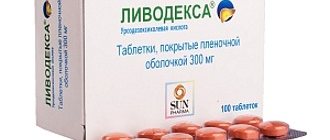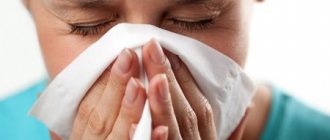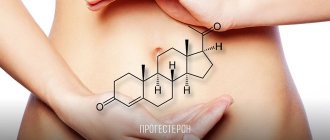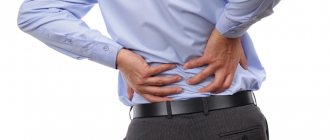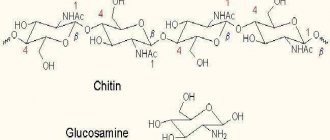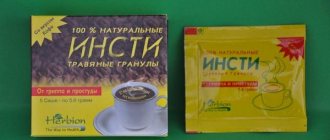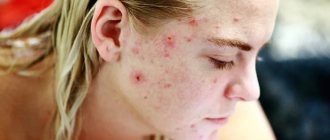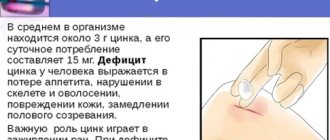Almost everyone knows that without vitamins, normal development, growth and vital functions of the human body are impossible. In their absence (vitaminosis) or deficiency (hypovitaminosis), diseases such as scurvy, rickets, beriberi develop, dermatitis occurs, the functions of the blood, respiratory system, cardiovascular system, gastrointestinal tract, etc. change. Today, vitamins and vitamin preparations make it relatively easy to cure and prevent such diseases.
It has been scientifically proven that the body’s minimum need for vitamins fluctuates and depends on many factors, such as the nature of work, age, gender, severity of the disease, but it is also a barrier that should not be crossed unnecessarily, since exceeding the norm is fraught with unpleasant consequences.
Unfortunately, we know and read more about the benefits of vitamins than about the dangers of their overdoses, and therefore, nowadays, cases of excess vitamins in the body, or hypervitaminosis, are becoming more and more common. The reason for this is people’s belief in the “harmlessness” of these substances and the easy availability of vitamin preparations. Often, parents, buying vitamins at the pharmacy, literally feed them to their child, forgetting that oversaturation of the body with vitamins, like any other medicine, is quite dangerous, especially in childhood.
Modern medical practice knows many examples of the negative and even toxic effects of excess doses of vitamins. Most often, hypervitaminosis occurs with an overdose of so-called fat-soluble vitamins, which include vitamins A (retinol), D (ergocalciferol), E (tocopherol).
Description of Vitamin B7
Biotin, known as vitamin B7, was identified at a time when scientists had already developed an enzymatic complex called BIOS. Several vitamins were isolated from this complex, one of which was named biotin.
Vitamin B7 is a water-soluble, colorless nutrient that is part of the B vitamin complex. Vitamin B7 helps support adrenal function, normal central nervous system function, and is essential for key metabolic processes in the body.
Biotin is an important component of enzymes in the body that break down certain substances such as fats, carbohydrates and others.
Due to the positive effect of vitamin B7 on skin, hair and nails, it began to be called the “beauty vitamin” in the literature.
What are bioflavonoids?
Bioflavonoids (rutin, vitamin P) are a large group of monohydric phenols that are formed by plant cells. Many of them play the role of pigments: flavonoids provide yellow and orange coloring to fruits and vegetables (for example, lemons, oranges).
Bioflavonoids are unique natural compounds found in plants.
These substances have biological activity, in particular, they are powerful antioxidants. Flavonoids, when entering the human body, bind free forms of oxygen and neutralize them, protecting cells from damage.
The metabolism of bioflavonoids has not been fully studied. It is known that these vitamins are not broken down by enzymes in saliva and gastric juice. Digestion and absorption occurs in the intestines.
Effect of vitamin B7
Biotin is an important component of the enzyme carboxylase. Carboxylase takes part in the reactions of fatty acid synthesis, glucose synthesis from proteins and the metabolism of amino acids, cholesterol and some fatty acids. There is more and more evidence that vitamin B7 plays a role in the process of DNA replication.
Vitamin B7 plays an important role in maintaining stable blood glucose levels. Since biotin is actively involved in the breakdown of carbohydrates in the blood, it is largely responsible for maintaining normal sugar levels. Diets low in biotin impair insulin production.
Currently, a huge amount of research is being conducted to determine the role of vitamin B7 in reducing glucose levels in patients with diabetes. Another area of interest for scientists is the question of the ability of biotin to strengthen nails. Meanwhile, European dermatologists began using biotin to treat patients and received encouraging data. Even though one of the symptoms of vitamin B7 deficiency is hair loss, there is no evidence yet that supplementing with biotin in the diet will restore hair growth.
Vitamin D hypervitaminosis
Symptoms
Hypervitaminosis D is dangerous (even fatal), manifested by loss of appetite, general weakness, nausea, headaches, and the appearance of protein, leukocytes and hyaline casts in the urine. In addition, with an excess of ergocalciferol in the body, calcium salts are washed out of the bones and deposited in the kidneys, adrenal glands, liver and blood vessels. The latter in older people can contribute to the formation of blood clots and exacerbation of atherosclerosis. Such hypercalcemia often leads to changes in the activity of the cardiovascular system and other organs.
Undoubtedly, the belief of some parents that the more vitamin D2 you give your child, the less danger he or she will develop rickets, does a disservice to children. And as a result of developing hypervitaminosis, a child develops convulsions, insomnia develops, growth stops, calcium, phosphorus, and protein are excreted in the urine, and sometimes the formation of kidney stones begins. There is a known case where, due to excessive consumption of vitamin D2, the bone hole through which the facial nerve passed became overgrown, resulting in paralysis in the child.
Due to the ability of vitamin D to cumulate (accumulate) in the body, it should be used only as directed and under the supervision of a doctor, with constant testing of urine and blood for calcium content.
Treatment
If signs of hypervitaminosis appear, medications containing vitamin D2 are immediately discontinued, and in order to eliminate unabsorbed vitamin and accelerate its removal from the body through the intestines, Vaseline oil is prescribed orally. To reduce the absorption of calcium from the intestine and accelerate the inactivation of vitamin D2 in the liver, glucocorticoid preparations (hydrocortisone, prednisolone, dexamethasone, etc.) are prescribed. At the same time, it is recommended to use vitamin A preparations (retinol acetate or retinol palmitate), as well as ascorbic acid, thiamine bromide (vitamin B), which reduce the toxic properties of vitamin D.
Sources of Vitamin B7
Nuts, root vegetables and eggs are the best sources of vitamin B7. Each of these foods contains more than a quarter of your daily requirement of biotin in one serving.
The required concentration of biotin is present in soybeans, sunflower and pumpkin seeds, mushrooms, tomatoes and especially peanuts.
Biotin is essential for the body's metabolic process. Vitamin B7 takes part in the rapid processing of almost all food consumed (carbohydrates, proteins, fats). Biotin plays a key role in fat and glucose metabolism. Therefore, when the level of biotin in the human body is normal, metabolic processes occur faster. Accordingly, vitamin B7 supplementation promotes weight loss.
Recent studies have shown that biotin at the genetic level is necessary to stabilize processes in cells, since it is involved in DNA replication and gene expression.
Vitamin P preparations
To replenish the bioflavonoids required by the human body during the development of the disease, vitamin-containing medications are prescribed. The following vitamin P preparations are available:
- rutoside;
- routine;
- ascorutin;
- urutin;
- peflavite.
The release form of rutin, ascorutin, peflavit is tablets, urutin is an injection solution, rutoside is tablets and gel. The rutoside formula is a quercetin glycoside. The instructions for use of the drug provide indications for the use of the drug: varicose veins, thrombophlebitis, hemorrhoids, swelling.
Bioflavonoids preparations are prescribed:
- with arachnoiditis;
- for arterial hypertension;
- with hemorrhagic diathesis;
- with glomerulonephritis;
- for capillary toxicosis;
- for measles;
- with hemorrhages in the retina of the eye;
- for rheumatism;
- with septic endocarditis;
- with scarlet fever;
- with typhus;
- with thrombocenic purpura.
Daily requirement of vitamin B7
Biotin can be synthesized only by certain types of bacteria, plants, algae, and mold. Therefore, it is very important how much vitamin the body receives from food.
The total requirement of biotin for men is 30 mcg/, for women 30 mcg/, for pregnant and lactating women 35 mcg/.
For children, the required amount of riboflavin is:
- children 0-6 months: 6 mcg;
- children 7-12 months: 8 mcg;
- Children 1-3 years: 12 mcg;
- children 4-8 years old: 15 mcg;
- children 9-13 years old: 20 mcg;
- children 14-18 years old: 25 mcg.
Biological role of vitamin P
The functions of vitamin P in the body largely repeat the functions performed by vitamin C. They participate together in a number of processes, enhancing each other’s beneficial effects. So, the role of vitamin P:
• Strengthens capillaries, reduces their fragility, improves the quality of microcirculation. This helps to reduce bleeding and the tendency to bruise, improve the quality of nutrition of organs and tissues, and achieve positive cosmetic effects. The latter consists of improving microcirculation in the dermis and hair follicles, which has a positive effect on the condition of the skin and hair. • Improves tissue metabolism and respiration. This provides the vitamin with a universal healing effect. • The antioxidant effect of rutin leads to rejuvenation. This may not only be noticeable externally; Processes that slow down aging also occur in internal organs. In particular, the development of atherosclerosis in blood vessels slows down. • Helps normalize blood pressure. • Strengthens the immune system, enhancing its resistance to aggressive infectious agents.
For vascular diseases, vitamin P is used as a medicine. It is used to speed up recovery after injuries, in diseases with an increased risk of thrombosis (venous insufficiency, varicose veins). As an angioprotector (a drug that protects blood vessels), rutin is used for retinopathy (pathology of the retinal vessels), diabetes mellitus (this disease has a damaging effect on the arteries).
Vitamin B7 hypovitaminosis
Vitamin B7 deficiency is a very rare pathological condition. This is due to the fact that the daily requirement for biotin is relatively low, and it is found in almost all foods. However, with long-term use of medications such as antibiotics, vitamin B7 hypovitaminosis can occur.
Symptoms of vitamin B7 deficiency include skin changes such as dry skin, seborrheic dermatitis, and brittle hair. The nervous system also reacts to vitamin deficiency with feelings of chronic fatigue, muscle weakness, and migraines.
There are no laboratory tests to detect vitamin B7 deficiency. Without proper levels of biotin, certain enzymes in the human body do not work properly. Therefore, due to hypovitaminosis, complications with the condition of the skin, intestinal tract and nervous system may occur. There may also be problems associated with metabolic disorders in the body, such as low blood sugar between meals, high ammonia levels, or acidosis. Biotin deficiency affects the cells that produce insulin. There is also some evidence that diabetes can lead to vitamin B7 deficiency. Fatalities are theoretically possible, but have not been recorded.
Causes and symptoms of deficiency
Vitamin deficiency is often nutritional in nature and develops in the winter-spring period, when the amount of fresh vegetables, fruits, berries and greens in the diet decreases.
Vitamin P deficiency is accompanied by increased fatigue and constant tiredness.
Vitamin P deficiency is accompanied by:
- spontaneous formation of small subcutaneous hemorrhages;
- increased fatigue, constant fatigue (both physical and emotional);
- decreased performance and productivity;
- aches and pains in muscles and joints;
- the appearance of acne, skin inflammation;
- bleeding gums;
- intense hair loss;
- the appearance of spider veins on the skin;
- weakness, splitting of nails;
- dryness, peeling, skin irritation.
Indications for use of vitamin B7
Additional medicinal intake of vitamin B7 is justified in the case of regular sports and heavy physical labor. In addition, additional intake of biotin is necessary for pregnant and lactating women.
Certain symptoms may also indicate the need to take vitamin B7:
- thinning hair (often with loss of color). Biotin plays an important role in the growth and maintenance of hair and nails. The first thing that indicates the need for vitamin B7 is hair loss and brittle nails;
- red scaly rash around the eyes, nose and mouth. Biotin helps the skin renew itself by stimulating the production of fats. They, in turn, provide elasticity and hydration to the skin, without which it becomes flaky and irritated;
- tingling in the arms and legs;
- metabolic disorders in the body, excess weight;
- diseases of the nervous system and a frequent tendency to depression, exhaustion of the body, the presence of hallucinations.
Vitamin B7 is recommended for people with diabetes or those at risk. Due to its metabolic properties, biotin helps control blood sugar levels.
The positive effect of taking vitamin B7 affects the activity of the sweat glands, the condition of the nervous tissue and bone marrow.
Adequate intake of vitamin B7 is necessary for nursing mothers. As early as 1940, studies showed that adding foods high in biotin to a nursing mother's diet reduced the symptoms of seborrheic dermatitis in infants.
Vitamin A hypervitaminosis
Vitamin A is of great importance for the human body. It promotes normal metabolism, growth and development of the body, ensures normal functioning of the visual organs, increases resistance to infectious diseases, thickens the mucous membranes of the respiratory and intestinal organs, prevents the penetration of pathogenic microflora into the body and, finally, enhances the processes of regeneration and wound healing.
However, a passion for retinol and drugs containing it often leads to hypervitaminosis. Patients most often explain the use of large doses of vitamin A by the desire to improve vision or speed up the healing process of wounds.
Symptoms
The initial symptoms of hypervitaminosis A in adults are drowsiness, lethargy, headache, dizziness, hair loss, loss of appetite, weight loss, facial flushing followed by itching and flaking of the skin. Exacerbation of cholelithiasis and chronic pancreatitis is less common.
In children with acute hypervitaminosis A, which develops as a result of a single use of large doses of the vitamin, intracranial pressure sharply increases (due to intensive formation of cerebrospinal fluid), the fontanel protrudes, vomiting occurs, body temperature rises and drowsiness appears.
With chronic hypervitaminosis A, which occurs as a result of prolonged and uncontrolled use of drugs containing it, children's appetite decreases, skin function is impaired, seborrhea appears, and hair falls out. At the same time, liver function is impaired, prothrombin synthesis decreases, which in turn leads to the development of hemolysis, bleeding gums, nosebleeds and other bleeding. In adults and children, painful hyperostoses (spurs) appear on the bones.
Excessive vitamin A content in the body also increases the production of mineral corticoids by the adrenal glands, which cause retention of sodium, chlorine, and water ions in the body and, as a result, the development of edema and pain in the bones. Often, with an overdose of vitamin A, skin pigmentation is observed, and during pregnancy, hypervitaminosis A can lead to impaired fetal development.
Treatment
When the first signs of hypervitaminosis A appear, medications containing retinol should be discontinued. At the same time, the consumption of products containing it, in particular milk, cheese, and butter, is limited. This quickly leads to the restoration of liver and skin function and an improvement in the general condition of the patient.
Interaction of vitamin B7 with other compounds and vitamins
Biotin combines well with the vitamin B complex. The main function of this compound is to help the body process energy and transport carbon dioxide.
When taking vitamin B complex, remember that eating raw protein interferes with the absorption of vitamin B7. If the protein is subjected to heat treatment, then avidin (a substance that destroys biotin) is denatured. It is recommended to take vitamin B7 together with magnesium, as this microelement improves the absorption of the vitamin. Please note that aluminum compounds reduce the amount of vitamin B7.
Vitamin B7 interacts effectively with fiber and has a positive effect on resolving problems with balancing blood sugar levels. Demonstrating this point, a Spanish team of scientists conducted an experiment and found that eating a mixture of nuts for 12 weeks led to a significant improvement in blood sugar levels.
Considering the fact that vitamin B7 is used in a vitamin complex, it is recommended to start taking the drug only after consulting with your doctor. Before taking the drug, allergy tests should be performed.
What foods contain vitamin P
Flavonoids are not synthesized by the human body, but are absorbed along with food. Unlike PP vitamins, rutin is contained in food products of plant origin: vegetables, fruits, berries. Products with vitamin P are brightly colored: green, yellow, red. It is useful for people to know which products contain rutin and other bioactive substances. A significant amount of flavonoid group substances is present:
- in grapes;
- in buckwheat;
- in green tea;
- in cabbage;
- in citrus fruits (lemons);
- in raspberries;
- in unripe walnuts;
- in rose hips;
- in tomatoes;
- in salad;
- in black currant berries; chokeberry;
- red rowan berries.
A bioactive flavonoid complex found in raw foods. Its structure is destroyed at elevated temperatures, sunlight, and freezing. Any processing of vitamin-containing foods harms the beneficial properties of bioflavonoids. Destructive substances for the bioactive complex are contained in nicotine and alcohol.
Absorption of vitamin H from food
Vitamin H is well absorbed from food, but if the body lacks magnesium, the absorption of biotin may be impaired. Therefore, it is very important to ensure that your diet always contains plant foods - a source of magnesium.
From some point of view, a product such as raw egg yolk is “dangerous” for vitamin H. It contains a compound called avidin, which binds biotin in the lumen of the digestive tract and makes its absorption impossible. However, when boiling or frying eggs, avidin is destroyed and vitamin H becomes available for absorption.
Biotin absorption is also blocked by saccharin. If it is regularly used as a sweetener, this creates conditions for the formation of vitamin H deficiency.
Some preservatives and food additives, for example, E221, can hinder the absorption of vitamin H. Eating natural food without additives is a good way to avoid hypovitaminosis.
Why does vitamin H deficiency occur?
The fastest and most noticeable deficiency of vitamin H manifests itself in dysbacteriosis. In this case, the content and ratio of various microorganisms in the flora are disrupted, and those probiotic bacteria that usually synthesize it cease to perform their functions. Often, hypovitaminosis develops after taking antibiotics, which have a detrimental effect on the state of the microflora.
Even if there is enough vitamin H in food, its deficiency can occur if a person has impaired biotin absorption. This happens with gastritis and enteritis. A tendency to vitamin deficiency is expressed in individuals who consume excessive doses of alcohol.
Why is hypervitaminosis dangerous?
In general, the toxic effect of vitamins on the body depends on the effect a particular nutrient has on metabolism. The specific symptoms of poisoning will also depend on this. We will look at the main types of hypervitaminosis in more detail below.
You need to know that hypervitaminosis can be acute or chronic. Acute hypervitaminosis develops within a few days or even hours after ingestion of doses many times higher than daily requirements (tens or hundreds of times). In the acute course of hypervitaminosis, the development of the disease follows the pattern of acute toxicosis.
indigestion
Hypervitaminosis is characterized by:
- rapid increase in the intensity of symptoms;
- headache;
- weakness;
- nausea;
- indigestion.
In some cases, dizziness, muscle tremors, and swelling occur. Due to persistent diarrhea, dehydration may occur.
Chronic hypervitaminosis develops slowly over several months. It occurs with the systematic use of excessive doses of vitamin preparations. Signs of hypervitaminosis are often blurred, making diagnosis difficult. To confirm the diagnosis, the doctor prescribes blood and urine tests.
SUCTION AND EXCHANGE
After the compound enters the digestive tract, a large amount of vitamin H is concentrated in the human liver and kidneys, then supplied to all organs.
Vitamin B7, which comes from food and is bound to protein, is initially released under the influence of proteolytic enzymes, then absorbed by the intestines, deposited in the adrenal glands, kidneys, and liver. At the same time, biotin is partially bound by serum albumin. The level of vitamin in the blood remains virtually unchanged.
In healthy people, biotin excretion in urine is 11-183 micrograms per day (Oppel). In the event of the onset of B7 vitamin deficiency, the excretion of the compound in the urine is reduced to 3.6 - 7.3 micrograms. When more than 300 micrograms of the substance is introduced into the body, there is a significant increase in the concentration of the nutrient in urine, and after 6 hours 30–50% of biotin is excreted naturally. Under these conditions, the content of coenzyme R in feces remains virtually unchanged. Normally, the level of the substance is in the range of 322 - 393 micrograms per day.
In patients suffering from polio, the excretion of vitamin H increases 3 times.
In women, the content of the vitamin compound in milk in the first days after birth is insignificant, while on the 10th day its level increases to 0.38 micrograms per 100 milliliters. Subsequently, it reaches 0.9 – 11.2 micrograms. Thus, the average content of useful nutrients in human milk is twice as high as immediately after birth.
Helpful Interaction
Different representatives of the flavonoid group work best in combination with each other. Unfortunately, not a single synthetic drug can recreate a completely natural product, which, in addition to substances already discovered by scientists, also contains unknown elements that undoubtedly have an effect.
Flavonoids are synergistic with all antioxidant vitamins: A, C, E and N. Together they are part of a single antioxidant system of cells and react with antioxidants produced by our body, mutually reinforcing their effect. But the main assistant of vitamin P is vitamin C. That is why wise nature placed them in the same places, for example, citrus fruits and many berries. Ascorbic acid is necessary for the restoration of glutathione, reactivation of tocopherols and carotenoids, and flavonoids significantly save the amount of vitamin C required for this.
Vitamin P combines well with anticoagulants, preventing the occurrence of complications when taking them.

